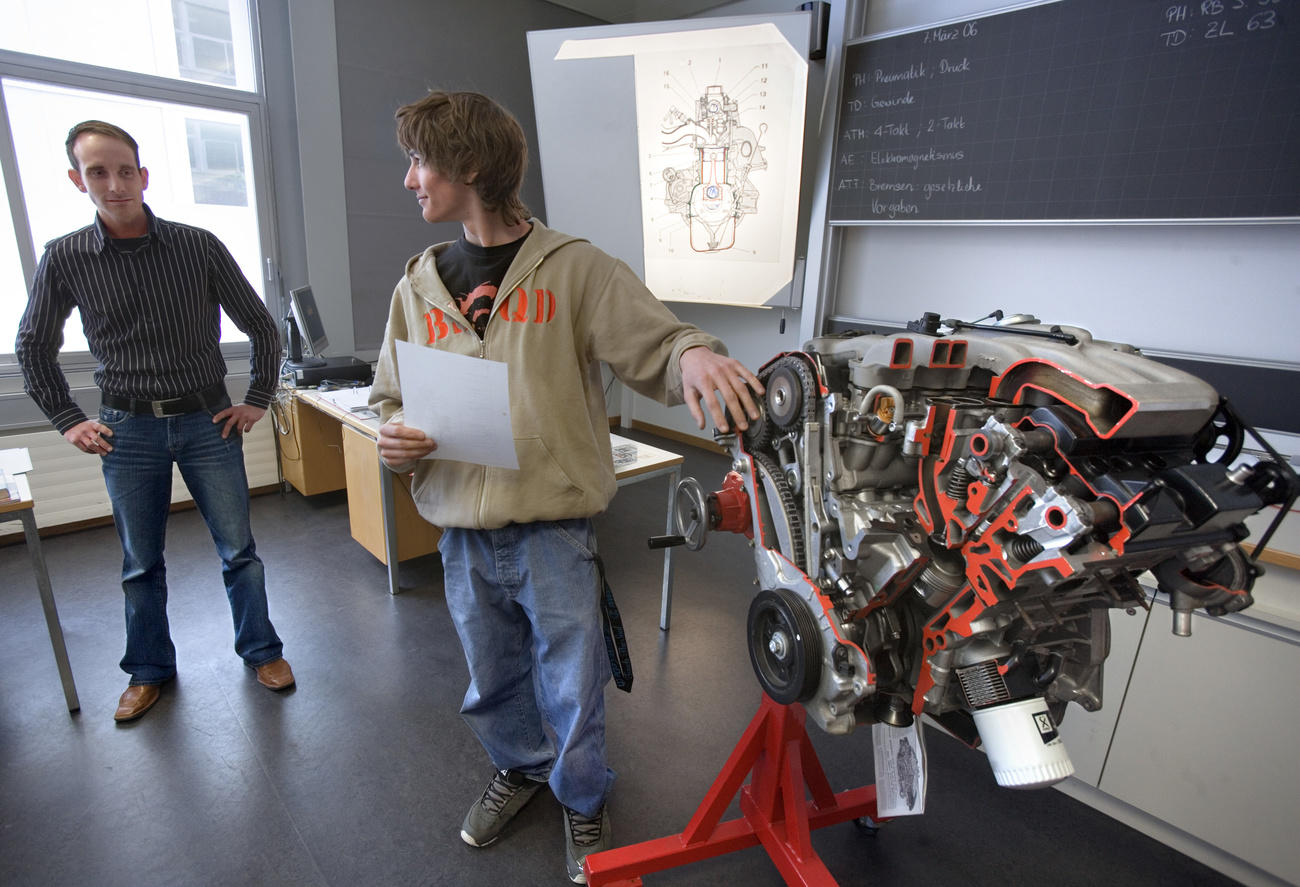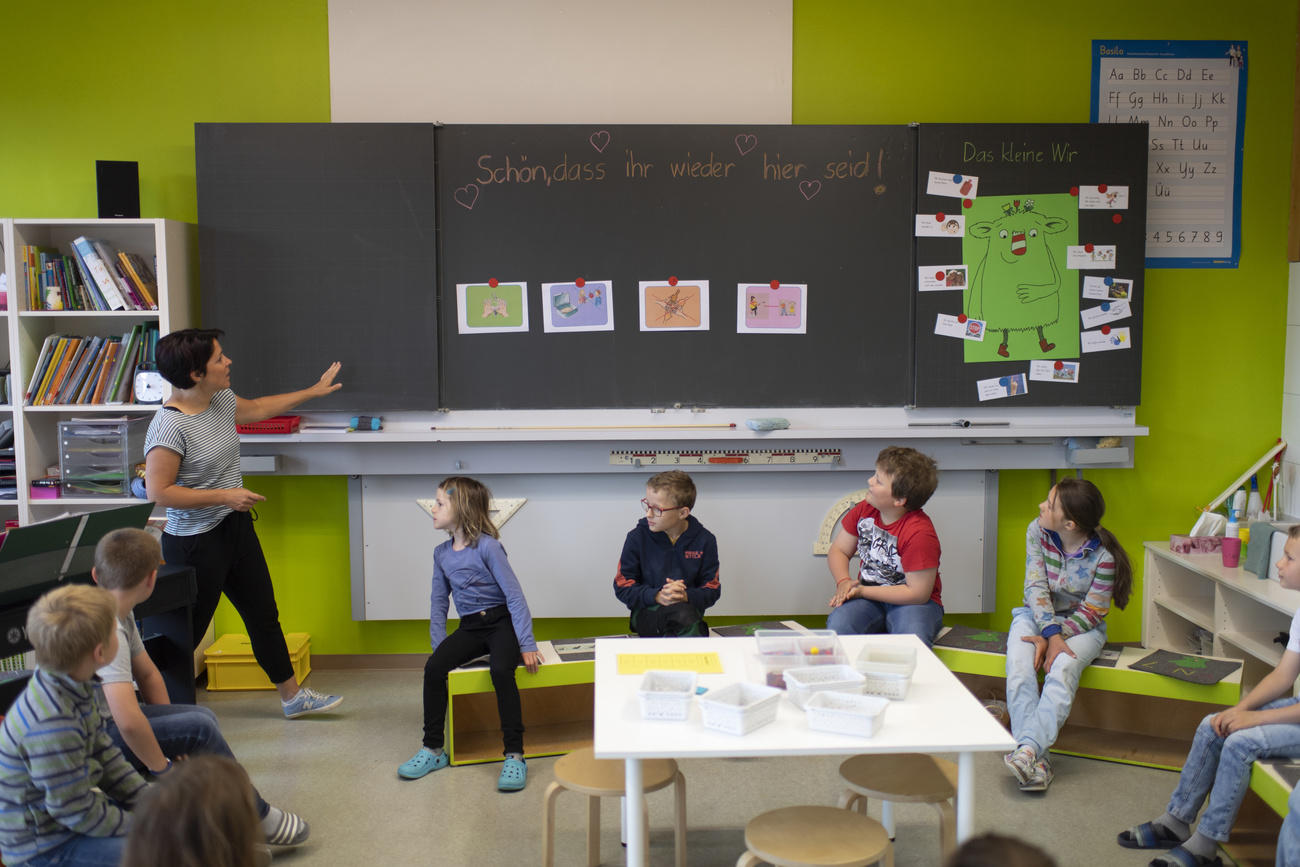How did Covid-19 impact Swiss education?

Switzerland had some advantages when dealing with school shutdowns during the height of the coronavirus pandemic and vocational training remains strong, says the OECD’s latest global education research.
The Organisation for Economic Cooperation and Development released its Education at a GlanceExternal link 2020 report on Tuesday, comparing education systems in 46 countries. This year’s edition looks at the state of vocational training, but also heavily focused on the fallout from the coronavirus crisis.
During the height of the pandemic, schools shut down across the world with students turning to remote learning to plug the gap.
“Switzerland had experienced – depending on the canton – up to 13 weeks of (effective) school closures in some form, compared to 14 weeks on average across OECD countries,” the report’s county notes for Switzerland stated.
In Switzerland schools closed nationwide on March 16 – an unprecedented step by the government as cantons are usually in charge of educational matters. They reopened progressively from May 11, with younger pupils going back first. The closure period also included a previously scheduled spring break, which may have made the impact less severe, the OECD report pointed out.
Hours lost at school
By looking at average school hours last year in Switzerland – 797 hours of classes per year at primary level (up to age 12) and 945 hours at lower secondary level (up to age 15/16) in Swiss schools – OECD researchers were able to calculate how much instruction time was lost during the lockdown: around 21 hours of compulsory instruction time at primary level and 25 hours at lower secondary level for each week of the closure.
The Education at a GlanceExternal link report analyses the education systems of the OECD’s 37 member countries, as well as of Argentina, Brazil, China, Costa Rica, India, Indonesia, the Russian Federation, Saudi Arabia and South Africa.
School reopenings have hinged greatly on maintaining a safe distance of one to two metres between pupils and staff, the OECD said.
“Countries with smaller class sizes may find it easier to comply with new restrictions on social distancing. In Switzerland, the average class size at primary level is 19 students in public institutions, which is smaller than the OECD average of 21.”
International students majorly impacted
The report also considered higher education; Swiss universities will shortly re-open for students for the autumn semester. Research could carry on in a limited capacity during the lockdown.
But this year’s student body will be quite different from previous years, with fewer international students. The OECD report concludes that this decreased “internationalisation” could be one of the main impacts of the pandemic on Swiss universities.
“Switzerland, with a higher share of international students than in total across the OECD, may be more strongly affected than other countries,” it said.
About 30% of students at Swiss universities come from abroad, according to the latest available statistics. They made up 56% of those doing a PhD in 2019/2020 – compared to an OECD average of 25%.
Vocational training faces challenges
Globally, vocational education and training (VET) was also hit hard by the coronavirus crisis, said the OECD, as business closures made work-based learning for apprentices more difficult. In May, the Swiss government created a special taskforce to help young people find apprenticeships amid the pandemic.
Yet this sector is crucial for ensuring that education and work are aligned, and for employment and economic recovery, said an editorial accompanying the report. Furthermore, “many of the professions that formed the backbone of economic and social life during the lockdown hinge on vocational qualifications,” it pointed out.
In Switzerland, 64% of students older than 15 go into apprenticeships, while others attend a school that prepares them for university or take a gap year if they struggle to find training.
Swiss system remains strong
“Switzerland is among the OECD countries with a strong vocational system,” the report found, linking this strength to the country’s high degree of reliance on work-study programmes. Some 90% of Switzerland’s upper secondary vocational students are enrolled in combined school- and work-based programmes, compared to 34% on average across OECD countries, according to the OECD’s Paris Directorate.
“Adults with vocational education also have good learning outcomes. Switzerland is among the few OECD countries where the completion rate of upper secondary level is higher for students in vocational programmes than in general ones,” the Directorate said.

More
How easy is it for foreign students to study in Swiss universities?

In compliance with the JTI standards
More: SWI swissinfo.ch certified by the Journalism Trust Initiative







Join the conversation!